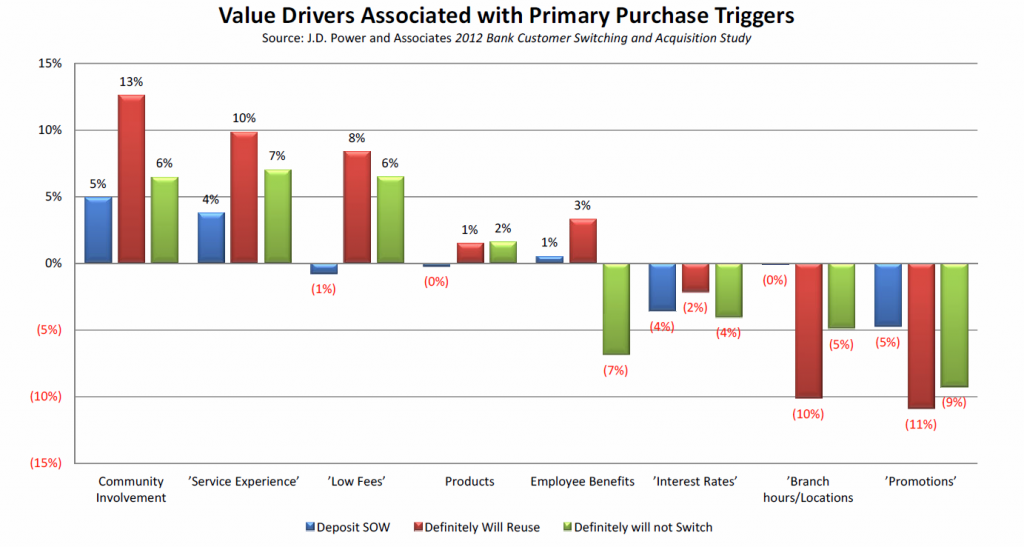At this year’s Best Practices in Retail Financial Services Symposium, J. Michael Beird of J.D. Power and Associates and Becky DeGeorge of U.S. Bank illuminated some important trends around customers who switch their primary bank. The number of customers doing this has increased for the second year in a row – in spite of the fairly high level of effort required to switch to a new primary bank.
How can banks take advantage of this trend?
An obvious response might be to ramp up prospecting efforts – but the speakers pointed out that the reason a customer selects a bank is highly relevant to their long-term profitability. J.D. Power and Associates has found that customers who choose a bank because of the bank’s community involvement are the most loyal and tend to give that bank greatest share of wallet; customers who switch to a bank based on a promotion are, unsurprisingly, at the opposite end of spectrum.
Banks looking to reap the benefits of the current turbulent landscape through prospecting must understand who they are targeting as their leads, as it should drastically change their acquisition strategy.
What’s even more important than acquiring new customers is maximizing their relationship with your bank once they’ve come in the door. How can you avoid repeating the mistakes of the competitors that drove these customers to switch banks in the first place?
The speakers outlined the necessary first steps for onboarding customers: satisfaction of a new bank customer is optimized if they receive a thorough needs assessment and a follow-up phone call within 2 days. This initial interaction has direct impacts on loyalty and share of wallet.
A complete needs assessment gets at what led the customer to switch as well as how they operate on a daily basis:
- What were they looking for in their last banking relationship that they weren’t getting?
- What don’t they like about their last bank?
- What other accounts (aside from the one they originally came for) do they need or use?
- How many checks do they write a month?
Such an assessment provides the customer with a positive first impression of the bank, and reassures the customer that they have made a correct decision in switching from a bank where they’ve had bad experiences.
From there, having the person who opened the first account with a new customer call within 2 days to say thank you enhances that customer’s first experience with your bank. It’s a simple step that, according to J.D. Power and Associates, does make a measurable difference in customer satisfaction.
To build on the speakers’ insights, banks targeting customers who switch institutions need to extend and support the customer experience throughout the life of the relationship. How can you use the insights gained from the needs assessment? Are there other simple actions, like that first phone call, that build loyalty in your customers?
Subscribe